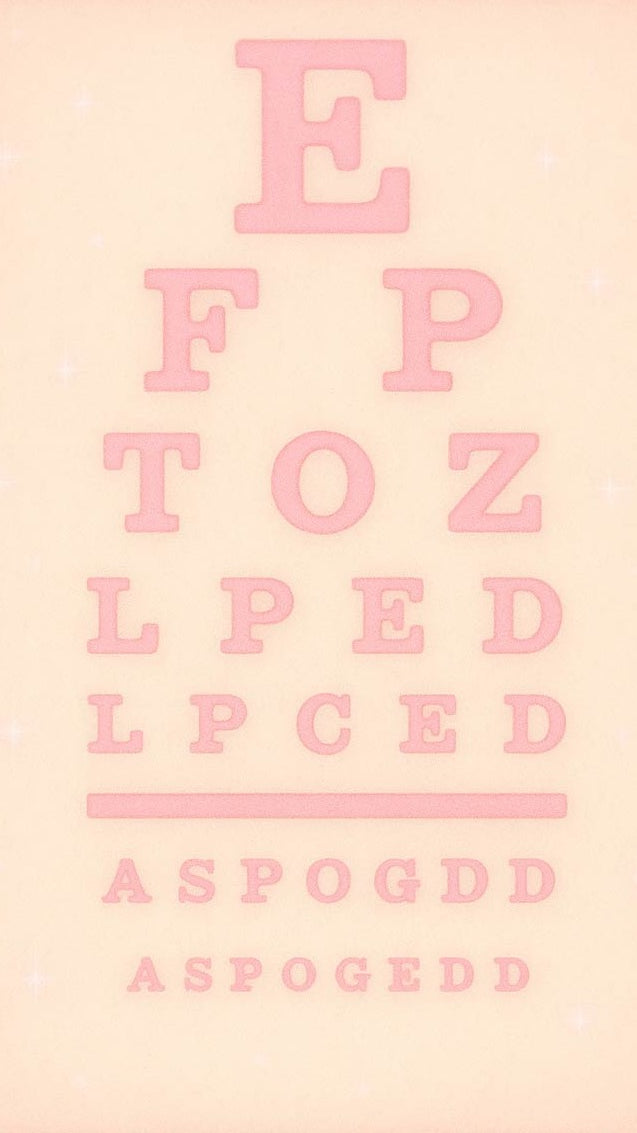
What Does 20/20 Vision Mean?
Share
Author: Hayley Martin
A Parent’s Guide to Visual Acuity
In a world where storybooks sparkle and stars twinkle from afar, being able to see clearly is one of the quiet superpowers our little ones rely on every day. You’ve likely heard the term “20/20 vision.” But what does it really mean? And what if your child’s vision isn’t quite 20/20?
Let’s take a magical stroll through the numbers, the history, and the kinds of vision challenges children may face. Told, of course, through the gentle and supportive lens of Once Upon a Charm.

What Is 20/20 Vision?
20/20 vision is a measurement of visual acuity, or how clearly your child can see details from a distance. When someone has 20/20 vision, it means that they can see at 20 feet what the average person with “normal” vision can also see at 20 feet.
It’s a baseline. Not perfect vision, but a standard measurement for how sharp and focused eyesight is at a distance.
The Magical Snellen Chart
You’ve probably seen it at every eye appointment: the classic white chart with rows of letters that get smaller and smaller. That’s called the Snellen chart, and it was invented way back in 1862 by a Dutch ophthalmologist named Herman Snellen.
This eye chart helps measure your child’s distance vision. During a test, they’ll be asked to stand 20 feet away and read the letters. Depending on how far down the chart they can read, they’ll receive a measurement like 20/20, 20/40, or 20/100.
Understanding Other Vision Measurements
Here’s what those magical little numbers mean:
20/20 Vision - Normal, healthy distance vision.
20/40 Vision - You need to be 20 feet away to see what someone with typical vision can see from 40 feet. Often the minimum for a driver’s license.
20/200 Vision - Considered legally blind in the U.S.
20/15 Vision - Better than average!
20/10 Vision - Exceptional visual acuity. Like an eagle!

What If My Child’s Vision Is Something Like 20/50 or 20/80?
This may indicate refractive errors, which are completely common and absolutely correctable with glasses or treatment!
Myopia (Nearsightedness)
If your child has myopia, she may see up close just fine, but the faraway world becomes fuzzy. This is one of the most common vision issues in children today.
Hyperopia (Farsightedness)
With hyperopia, close-up vision becomes tricky. Particularly for reading or crafts.
Astigmatism causes blurred vision at all distances. It’s often due to an irregularly shaped cornea.
Why Early Vision Tests Matter
School vision screenings and pediatrician well-checks often miss deeper issues like:
- Eye teaming problems (how well the eyes work together)
- Eye tracking challenges (how smoothly the eyes follow words on a page)
- Poor visual processing (how the brain processes what the eyes see, turning images into understanding, meaning and action)
That’s why a full pediatric eye exam is so important, particularly if your child shows any signs she might need glasses.
Through Her Eyes, The Story Unfolds…
At Once Upon a Charm, we believe every child deserves to see her story clearly. From distant chalkboards to sparkling fairy wings. If her vision isn’t 20/20, that’s okay. With the right guidance and a little enchantment, we can help her view the world with joy, confidence, and wonder.
Keep Exploring
Would you like to learn more about kids' vision challenges and how to support your child's eyesight? Explore more articles in our Once Upon a Diagnosis section, where we gently explain everything from how to read a glasses prescription to signs your child may need their first pair of frames.
Let the Magic Begin
And when you're ready to choose an enchanting frame for her, we'll be right here, tucked into our little corner of the internet, ready to help her see the world with wonder.
